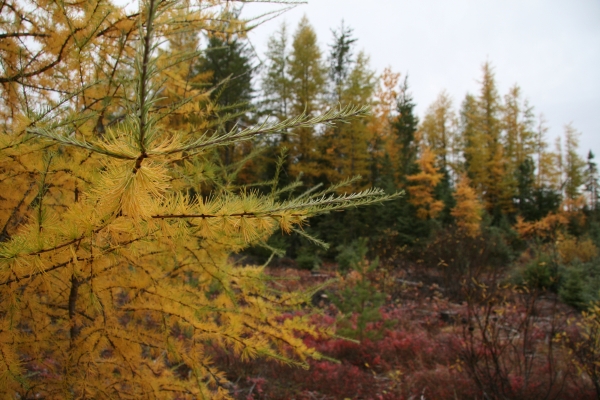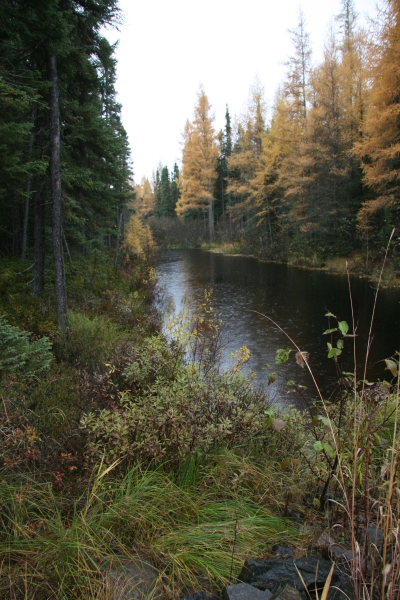10/12/08 – No, those trees aren’t dying – they’re tamaracks, the only deciduous conifer in the boreal forest. While they blend in with the rest of the evergreen conifer stands for most of the summer season, fall is the time when tamaracks shine. This past week, the stand down near the Grade road suddenly turned an arrestingly deep gold color, which will keep for a few short weeks before the needles fall off and leave the trees as bare skeletons for the winter months.

A tamarack shows off its needle tufts, beginning to change from pale green to autumn gold. Its cousins in the background now have no problem distinguishing themselves from all those other conifers.
Some tamarack (Larix laricina) facts from Mark Stensaas’s book Canoe Country Flora: Tamaracks are in the larch family. They thrive in boggy areas, and they grow farther north than any other tree in North America – up to 67 degrees north latitude. Their rot-resistant wood was once prized by ship builders and used as telegraph poles and railroad ties. The inner bark and sap are also said to have healing properties when used as compresses for burns and to heal wounds. During the summer, you can identify tamaracks from afar by their slightly brighter, paler color (since they grow all new needles every year) and the “fuzzy” quality lent by the tufted needles that grow with twenty to forty one-inch needles per fascicle. – Molly.

This stream crosses the Sawbill Trail about seven miles south of the lake. I came upon it in a drizzle that highlighted the variety of fall colors along the banks.
